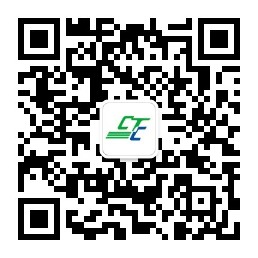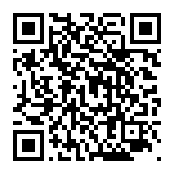With the development of China's economy and society and the improvement of material life, the people's demand for spiritual life is increasing, and the companionship of pets has become a part of many people's lives. The pet industry is thriving and is becoming an emerging industry in modern agriculture, closely related to the happiness of the general public. As the foundation of supporting the pet industry, pet feed has developed rapidly in recent years, exhibiting strong resilience, great potential, and sufficient activity.
According to Li Defa, an academician of the CAE Member and president of the China Feed Industry Association, the scale of the pet feed industry has grown rapidly in recent years. In 2021, the number of pet feed manufacturers will reach 357. The production of pet feed increased from 79000 tons in 2018 to 1.237 million tons in 2022, a cumulative increase of 56.6%. The pet feed industry cluster is highly concentrated, with 95% of pet feed production concentrated in North China and East China. Hebei, Shandong, and Shanghai alone account for 72.1% of the national production. In addition, the demand for pet feed imports has significantly increased. Currently, the Ministry of Agriculture and Rural Affairs has issued over 600 pet feed import registration certificates, which is 7.3 times higher than in 2016. The proportion of the total number of imported feed registration certificates has increased from 20% to 50%. The import volume of dog and cat feed has rapidly increased from less than 10000 tons before 2016 to over 100000 tons. With the continuous enhancement of comprehensive productivity, continuous improvement of industrial quality, and accelerated adjustment of industrial structure, China's pet feed industry has entered a fast lane of high-quality development.

The pet food displayed by exhibitors outside the first China Pet Food Conference attracted many people to stop.
According to the 2021 China Pet White Paper, the number of dogs and cats raised in urban areas in China has exceeded 100 million in 2021, with a pet ownership rate of 17%, while the level in developed countries is approximately over 40%.
For our country, there is a lot of room for improvement and development in the pet industry. With the improvement of residents' income level and quality of life, the concept of keeping pets is gradually shifting from caring for homes to emotional companionship. It is expected that China will become the world's largest pet market in the next 10 years. "Qin Yuchang, President of the Pet Feed (Food) Branch of the China Feed Industry Association and Director of the Beijing Institute of Animal Husbandry and Veterinary Medicine, Chinese Academy of Agricultural Sciences, said. In 2020, the scale of China's pet industry has reached over 490 billion yuan, making it the third largest service market after Europe and America. With the joint efforts of the demand and supply sides of the pet industry, the scale of the pet industry has grown rapidly, and it is expected that the market size will reach 800 billion yuan by 2025.

At the meeting, Xin Guochang, Deputy Director of the Animal Husbandry and Veterinary Bureau of the Ministry of Agriculture and Rural Affairs, raised three hopes for the pet food industry. One is to strictly implement the industry management system. In 2018, the Ministry of Agriculture and Rural Affairs formulated and issued the "Pet Feed Management Measures", establishing a standardized management system and promoting the pet feed industry onto a standardized development track. The vast majority of pet feed products have already achieved certified production, but according to market reactions, there are still some cases of OEM and unlicensed production in the production process. We need to increase the publicity and implementation of regulations, and enterprises should carry out production and operation in accordance with the law and regulations.
The second is to strictly control product quality. Quality and safety are the lifeline of the product, which is related to the health of pets and the vital interests of pet owners. Many pet feed operators, especially e-commerce and cross-border e-commerce on internet trading platforms, do not strictly control product quality and safety, resulting in some products with varying quality entering the market. The Ministry of Agriculture and Rural Affairs will continue to strengthen the supervision of the pet feed industry, continuously improve inspection and testing technology, optimize the regulatory system, and ensure that enterprises strictly adhere to the bottom line of quality and safety.
Thirdly, it is necessary to standardize the advertising and promotion. In the relevant regulations on pet feed labels, standardized requirements are put forward for the label content, especially in the claims of product ingredients, functions, and characteristics. It is not allowed to mislead consumers by making false claims without basis. The Ministry of Agriculture and Rural Affairs will continue to organize local management departments to carry out special inspections of labels. For behaviors that do not regulate label labeling and functional claims, they will be resolutely ordered to rectify, and those that cause serious consequences will be held accountable.
At present, there is a significant gap in the standards for pet feed in China, which seriously lags behind the development needs of the industry, especially the standards for pet food additives. Out of more than 400 additives, only more than 100 standards have been formulated. "Su Shenglan, Deputy Director of the Quality Standards Department of the National Animal Husbandry Station, introduced that the formulation of standards should follow the principles of coordination, scientific rationality, and practical production, and establish a comprehensive application, project approval, drafting, and soliciting opinions A series of work procedures such as approval.
Based on the monitoring results of pet feed in recent years, it can be seen that some companies cannot meet the nutritional requirements of young animals in the production of general-purpose pet food. This is mainly reflected in the high unqualified rate of water-soluble chloride, total calcium, and total phosphorus content, and the insufficient quality control of animal raw materials such as meat powder by enterprises. Domestic pet feed generally has the problem of "drilling holes" and "playing the edge ball" in the design of packaging labels, while imported pet feed There are still some indicators that are not up to standard Fan Xia, Executive Deputy Director of the National Feed Quality Inspection and Testing Center (Beijing), said.
Since the birth of pet food, its nutritional composition has always been a highlight and selling point. However, there are still many misconceptions about the nutrition of pet food. For first-time "pet breeders", it is common to not understand the labels on food packaging and not adapt to the overall situation in the face of complex advertising. Correctly identifying food nutritional elements has become a purchasing difficulty.
Nowadays, many young people choose to check out new media platforms before choosing food for their pets, but the answer on many platforms is wrong. "Dr. Wu Yi from China Agricultural University showed a screenshot on the screen - a blogger explaining to netizens on a video platform what pepsin digestion rate is, and this highly collected popular science video actually has many fundamental errors.
The same nutrient misreading also occurs among enterprise producers. There is an excessive pursuit of high protein in the industry, believing that the higher the protein content, the more nutritious it is. In fact, the crude protein content of pet food can only objectively reflect the numerical value and cannot reflect its source and quality. Absorbing too much protein can cause pet feces to smell, diarrhea, and other metabolic burdens, which is actually detrimental to pet health, "said Wu Yi.
How to determine what your pet needs to eat? Ding Limin, an associate professor at China Agricultural University, stated that variety, health status, and exercise preferences can all affect the absorption and energy conversion of nutrients in pets. Currently, there is no scientific recommendation for the ratio of the three major nutrients (protein, fat, and carbohydrates). When choosing pet food, consumers should comprehensively consider elements such as nutritional balance, palatability, and digestibility, provide animals with a full and balanced diet, and ensure the safety of animals and their owners.











